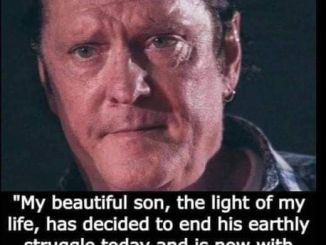
The Transformation of Our Bodies and Diets
In the 1970s, a visit to the beach was a showcase of lean, active bodies. People of all ages enjoyed the sun, surf, and sand with a level of fitness that seemed effortless. Fast forward to today, and the scene has drastically changed. The prevalence of overweight and obese individuals has skyrocketed, painting a stark contrast to the svelte figures of the past. This shift prompts us to examine the role of the food industry in this dramatic transformation.

The 1970s: A Different Era of Eating
During the 70s, the typical diet was markedly different from what we see today. Meals were often home-cooked, with fresh ingredients forming the backbone of family dinners. Processed foods were available but not ubiquitous. Fast food chains were fewer, and eating out was considered a treat rather than a regular occurrence. Portion sizes were smaller, and sugary snacks were less prevalent in households.
Physical activity also played a significant role in the lives of people in the 70s. Without the convenience of digital entertainment, children and adults alike spent more time outdoors, engaging in physical activities. Walking, cycling, and participating in sports were common pastimes.
The Rise of Processed Foods
The landscape began to change with the rise of processed foods and fast food chains in the late 20th century. The food industry, driven by profit, began to prioritize convenience and shelf-life over nutritional value. High-fructose corn syrup, hydrogenated oils, and an array of artificial additives became staples in many foods. These ingredients made food cheaper and more accessible but also less healthy.
Marketing strategies targeted at children and busy adults further entrenched these unhealthy eating habits. Fast food advertisements promised quick, tasty meals at low prices, and snack companies created products that were hard to resist due to their high sugar and salt content. This aggressive marketing, combined with the convenience of ready-made meals, led to a significant increase in the consumption of unhealthy foods.
The Impact on Public Health
The consequences of these changes in diet have been profound. Rates of obesity have soared, bringing with them a host of health problems, including diabetes, heart disease, and various forms of cancer. According to the World Health Organization, worldwide obesity has nearly tripled since 1975. In many countries, the number of overweight children and adolescents has increased tenfold over the same period.
The food industry’s influence extends beyond what we eat to how we perceive food. Portion sizes have increased dramatically, and the notion of what constitutes a normal serving has become distorted. Additionally, the emphasis on convenience has led to a decline in cooking skills, with many people relying heavily on pre-packaged meals and fast food.
Moving Towards a Healthier Future
Addressing this issue requires a multifaceted approach. Public awareness campaigns can educate people about the dangers of processed foods and the benefits of a balanced diet. Governments can implement policies to regulate the marketing of unhealthy foods, particularly to children, and promote healthier options. Schools can play a crucial role by providing nutritious meals and incorporating nutrition education into their curricula.
On an individual level, making a conscious effort to prepare meals from fresh ingredients, controlling portion sizes, and increasing physical activity can help counteract the damage done by the food industry. Embracing a lifestyle reminiscent of the 70s, where home-cooked meals and outdoor activities were the norm, can pave the way towards a healthier society.
“You Won’t Believe How This Actor Scared Women Off-Screen!
Vincent D’Onofrio is best known for his memorable role as the clumsy Marine recruit in Stanley Kubrick’s movie Full Metal Jacket. However, his popularity decreased after that.
The ruggedly handsome actor, who turned 64 on June 30, 2023, had to change his appearance drastically for the role. This change made women, who once loved his curly dark hair and athletic build, less interested in him.
D’Onofrio has a long and varied career. He always gives his best to every role, transforming completely into his characters, making people forget who he really is.
Born in Brooklyn, D’Onofrio started in stage productions, both off-Broadway and on. He had many side jobs to support his acting dreams, including working as a bodyguard for Yul Brynner and Robert Plant.
In his early days, he worked as a nightclub bouncer, delivered flowers, hung drapes, and drove a cab to make ends meet.
After acting in a few low-budget films, his friend Matthew Modine suggested he send an audition tape to Stanley Kubrick, who was casting for his next big movie.
The 6-foot-3 D’Onofrio, who was very fit at the time, won the role of Leonard, a fat, dim-witted character, but had to meet some tough conditions.
Working with Kubrick was a life-changing experience for D’Onofrio, allowing him to fully dive into his character and push his acting limits in a challenging environment.
At 24, D’Onofrio had to shave his head and gain 70 to 80 pounds for the role, the most weight any actor has gained for a role.
Kubrick initially asked if he was okay with gaining weight, and after D’Onofrio gained 30 pounds, Kubrick felt he still looked too strong. So, D’Onofrio ended up gaining about 80 pounds, going from 200 to 280 pounds.
Gaining weight for the role was tough for D’Onofrio, especially when he had to perform the intense boot-camp scenes in the movie. Normally, obstacle courses would have been easy for him with his athletic build, but they were very challenging at 280 pounds.
D’Onofrio’s incredible performance as the chubby, dim-witted, and mentally disturbed Leonard earned him a lot of praise from critics. However, some fans started confusing him with his character.
“People treat you differently when you’re that size,” D’Onofrio said. “My head was shaved, so I looked completely different from my usual long, lanky self. I turned into this big, burly guy with a bald head. It was a very strange life change.”
He added, “It changed my life. Women didn’t look at me anymore; I mostly saw their backs as they ran away. People even talked to me slowly, thinking I was stupid.”

A year after filming Full Metal Jacket, Vincent D’Onofrio had a full head of hair again and his body returned to its original size.
Today, the New York-born director, producer, screenwriter, and actor, who wrote the 2023 book “Pigs Can’t Look Up,” credits his long career to Stanley Kubrick.
“Stanley made my career, there’s no question about that. I’ve done over 50 films because of him and that part,” D’Onofrio said. He has had many roles in both film and TV, including Law & Order: Criminal Intent (2001-2011) and Marvel’s Daredevil (2015-2018). His movies include Dying Young, The Break-Up, and Jurassic World.
D’Onofrio’s life was greatly impacted by his parents’ divorce when he was a child. His mother remarried George Meyer, a well-known American producer and writer, and the family moved to Hialeah, Florida. As a child, D’Onofrio was quiet and often spent time alone in his room, deep in thought.
While living in Florida, he became interested in magic and learned sleight of hand from Cuban performers who ran a small magic store.
In the early 1990s, Vincent D’Onofrio was romantically involved with actress Greta Scacchi. They appeared together in several films, including The Player and Fires Within. They have a daughter named Leila George, born around 1991 or 1992, who has also become an actress.

In 1997, Vincent D’Onofrio married Carin van der Donk, a Dutch model. They had their first son in 1999. However, their relationship had problems in the early 2000s, leading to a separation. They later got back together and had a second son in 2008.
In June 2023, D’Onofrio filed for divorce in Manhattan Supreme Court, ending his 26-year marriage with Carin van der Donk.
D’Onofrio appeared with Sandra Bullock in the 2021 film The Unforgivable and will be in the upcoming comedy Dumb Money.

Vincent D’Onofrio was fantastic in Full Metal Jacket and his mental decline as Leonard is incredibly believable!
He looks totally different now, as to be expected many decades later, but we still enjoy his performances!
What do you think about his portrayal of the dumb, fat Leonard?



Leave a Reply